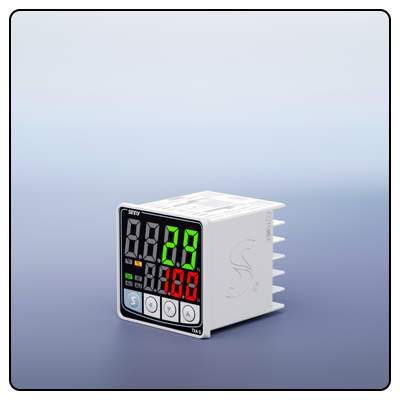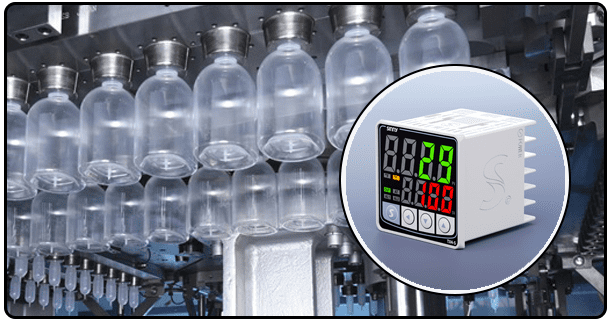Real-World Applications of PID Temperature Control
Explore how PID controllers play an essential role in providing precise temperature regulation across industries - from manufacturing to home automation and everything in between! Discover how its revolutionary technology enhances efficiency, quality and safety through this exhaustive exploration.
1. Introduction
Overview of PID Temperature Control
Proportional, Integral and Derivative (PID) controllers play a key role in providing accurate and stable temperature regulation across different settings. By adapting process variables accordingly to maintain desired temperatures while minimising errors and maintaining system stability.
Importance of PID Control
Accurate temperature regulation is vital in many applications ranging from industrial processes to home heating systems, with PID temperature controllers offering reliable temperature regulation that increases efficiency, improve product quality and ensure safety.
2. PID Basics
How PID Controllers Operate
PID controllers work by continuously calculating an error value that represents the difference between desired setpoint and actual process variable values, then applying correction based on proportional, integral, and derivative terms to reduce this error value by adjusting control input accordingly and thus minimising it.
Roles of PID Components
Proportional (P): This component responds immediately and proportionately to any current error that arises, providing direct and immediate reactionary action when changes in temperature occur.
Integral (I): The integral component is designed to address past errors by gradually integrating errors over time, in order to help eradicate residual steady state errors that cannot be rectified with just proportional components alone.
Derivative (D): This component predicts future errors by considering their rate of change and damping effects to improve system stability and response time.
3. Industrial Applications
Manufacturing Processes
PID controllers play an essential role in manufacturing processes like heat treating metals or drying solvents from painted surfaces. By maintaining temperatures within exact limits, these controllers help guarantee consistent product quality while decreasing waste.
Chemical Processing
Retaining proper reaction temperatures is vitally important to product quality and safety in chemical processing. PID controllers provide accurate temperature management that optimizes reaction conditions while protecting from dangerous temperature fluctuations.
4. Commercial and Domestic Oven Use
PID Controllers in Commercial Ovens
Food industry PID controllers are an invaluable part of commercial ovens used for baking and cooking; their consistent temperature monitoring helps achieve desired cooking results while adhering to food safety standards.
Home Heating and Cooling Systems
PID controllers are increasingly being employed in heating and cooling systems used in domestic settings as an efficient way of improving energy consumption while still creating comfortable living conditions for residents while saving energy costs. By precisely controlling temperature settings in each of these systems, they help create optimal living environments while cutting energy consumption significantly.
5. Specialized Applications
Sensitive Environments
PID controllers play an essential role in laboratory and pharmaceutical manufacturing settings where precise temperature regulation is crucial to experiment integrity and product quality. PID controllers play this crucial role while helping maintain reliable experiments or pharmaceutical products that comply with quality requirements.
Food and Beverage Industry
PID controllers are widely utilized by food and beverage producers in order to achieve precise temperatures during various production stages, thus guaranteeing quality and meeting strict industry standards with their final products.
6. Technological Advancements
Integration with Modern Technology
Modern PID controllers have increasingly integrated advanced technologies, like IoT and machine learning, into their design to increase performance by providing remote monitoring, predictive maintenance and more intricate control strategies. This trend continues today.
Future Trends
PID temperature control may evolve to include further advances in automation and artificial intelligence technologies, creating more precise temperature management solutions with expanded applications in diverse fields.
7. Case Studies
Numerous case studies illustrate the successful implementation of PID temperature control. One manufacturing plant that used them for heat treatment reported increased product consistency as well as lower energy use due to PID controllers.
Process Improvements
These case studies illustrate how PID control has led to significant process enhancements, such as higher product quality, greater efficiencies and decreased operating costs.
8. Conclusion on PID Temperature Control
PID Temperature Control's effects span multiple applications spanning industrial manufacturing to home heating systems. With its ability to precisely maintain precise temperatures, its benefits extend from product quality, operational efficiencies, and energy savings - to energy saving measures themselves!
Understanding PID Control
Process optimization professionals cannot underestimate the significance of understanding PID controllers; understanding them will result in significant enhancements of system performance - an invaluable asset in today's technology-driven world.
- Understanding PID Controllers for Temperature Regulation
- PID Temperature Controllers: Enhancing Safety and Reliability























